Jewish Theatre, For Heaven’s Sake!
David Y. Chack and Ari Roth at the 2014 Association for Jewish Theatre Conference
Does the dismissal of Ari Roth, the Artistic Director of Theater J in Washington, D.C., the theatre that has been the gold standard for Jewish theatre, bode disaster for Jewish theatre that is creative, edgy, and challenging?
The particulars of Roth’s situation in relation to DC’s Jewish Community Center and the content he produced—which included plays that were deemed critical of Israel and plays by playwrights such as Tony Kushner—are compelling. But I would like to zoom out from the firestorm in order to understand a new trend for Jewish institutions that used to be primary presenters of Jewish arts and culture and are now shying away from culturally specific and intellectually daring theatre.
I was on a panel called “Cultural and Transcultural Theatre,” cosponsored by the 2013 Association for Jewish Theatre conference with the Minnesota Jewish Theatre. Other panelists included Lou Bellamy, Artistic Director of Penumbra Theatre, the African American Theatre in Minneapolis/St Paul and Randy Reyes, Artistic Director of Mu Performing Arts, the Asian American Performance Center in Minneapolis.
The need for diverse cultural expressions and challenging ideas is important both for a free society and for our minds, bodies, and spirits.
Of course we talked about the challenges of fundraising and reaching a diverse audience for our work. But we also talked about the need to bring ethnicities together. I spoke about The Invasion of Skokie, the play that was currently being produced by my Chicago-based theatre project, ShPIeL-Performing Identity, written by Steven Peterson. The play is about a Jewish family dealing with neo-Nazis in their town, and also the challenges of interfaith relationships. Bellamy then spoke about being one of the first to present the play The Whipping Man, about Jews and African Americans during the Civil War.
These are examples of culturally specific theatres presenting plays that challenge the status quo and reflect a transcultural world. However, this is not what JCCs and Jewish cultural institutions want to present. Many are reluctant to take on theatre with subjects that might show weaknesses in the Jewish community or that provoke those who are significant donors who have different perspectives from the playwrights. The JCCs shy away from interculturalism and view their role as centers for families, with theatre that relies on nostalgia and sentimentality like Fiddler On The Roof or The Sound of Music (which was written by Jewish people and has Nazi “bad-guys” in it). This may be shortsighted, since recent studies like the Pew Survey on Religion show that the lack of diversity and multiple viewpoints (on Israel and others) is driving young Jews and others away from Jewish communal organizations.
So, now let’s start to zoom in for a closer look and ask, what is the purpose of Jewish theatre? The Association for Jewish Theatre (of which I am president) released a statement to its members and the media in response to Roth’s dismissal, about the nature of theatre for the Jewish community:
Theatre fulfills a unique and immensely significant role for the diversity of the Jewish community. It provides opportunities to experience multiple perspectives by broadening the communities’ worldview, by individuals uncovering and questioning their own assumptions, and by creating pathways to understanding each other.
The need for diverse cultural expressions and challenging ideas is important both for a free society and for our minds, bodies, and spirits. As Oskar Eustis of the Public Theater said in the New York Times, “The nonprofit movement can’t exist and can’t fulfill its function, unless there is some degree of protection not only for freedom of expression, but for the freedom to encourage dissent and debate—that’s why we’re not the commercial theater.”
Jewish theatre does this from a "Jewy" point of view. It presents history, culture, religion, social issues, politics, interculturality, humor, tragedy, and everything in between. It presents Jewish stories and narratives from multiple perspectives. It portrays a more than 2,000-year-old history of celebrations and turmoil. And it draws on a tradition of performance that comes from ancient rituals to Purim plays, Yiddish theatre to Broadway musicals, and Israeli drama to Holocaust theatre.
Jewish theatre and its interculturalism is necessary now more than ever. Its potential for bringing people together from diverse backgrounds is greater than anything else that currently exists in the Jewish world, and it puts Jews in dialogue with those outside of Jewish society. At talkbacks for ShPIeL’s 2014 production of The Passions of Emma Goldman (with and by Roslyn Alexander), it was so exciting to have non-Jews and Jews learning about Jewish radical politics, immigration policies, laws about the exercise of free speech, unions, women’s rights, and how the free love practiced by Emma Goldman at the turn of the century was a foreshadowing to interfaith and LGBT marriage ceremonies and other sexual relationships today.
The great rabbi, Abraham Joshua Heschel—who was criticized by the mainstream Jewish community for marching in Selma with Martin Luther King and for protesting the war in Vietnam—wrote an essay entitled “No Religion Is An Island.” He believed down to his very soul that, “To meet a human being is an opportunity to sense the image of God, the presence of God. According to a rabbinical interpretation, the Lord said to Moses: ‘Wherever you see the trace of man there I stand before you...’"
The same can be said of theatre. No theatre is an island and this is being proven by the outcry from so many artistic directors of multiple theatres of all kinds, across the nation, protesting Roth’s ouster. We are seeing the banding together of theatres, all who want to support Ari Roth.
But zooming out to zoom right back in—the true big picture is that we are seeing a theatre community that takes its role seriously in presenting theatre that challenges and joins people together from all different backgrounds, that reaches out to the other in need, that goes beyond ghettoization and parochialism.
***
Photo by Elaine Siegel

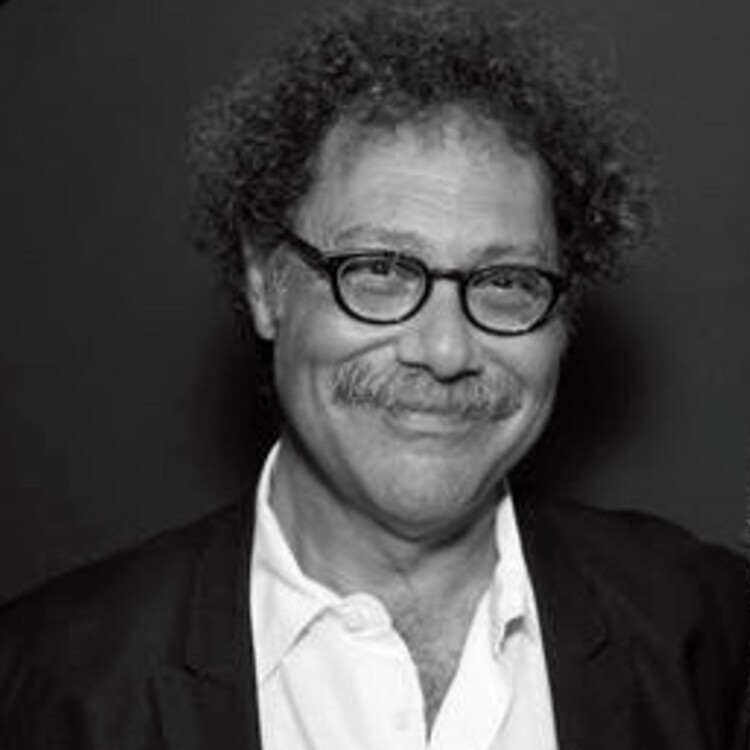
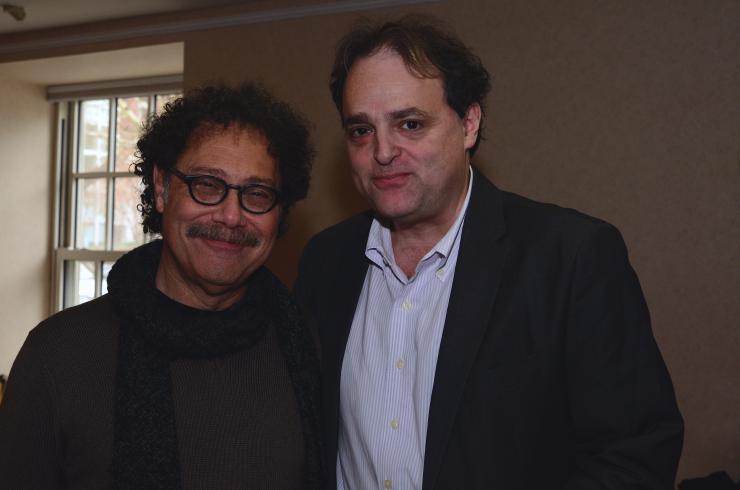
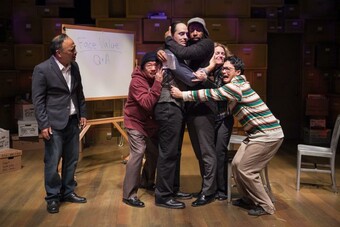

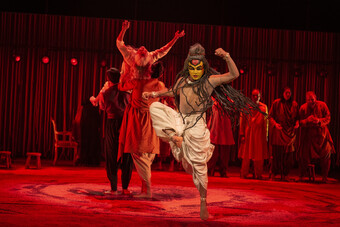


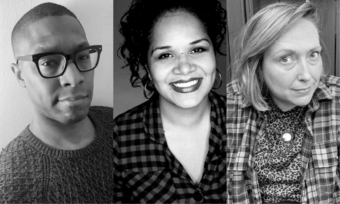




Comments
The article is just the start of the conversation—we want to know what you think about this subject, too! HowlRound is a space for knowledge-sharing, and we welcome spirited, thoughtful, and on-topic dialogue. Find our full comments policy here
Thank you all for your write-backs. Certainly the work that both you, Shirley, and you, David, are doing is incredible. The reality is that it isn't being replicated very many places around the country. Most Jewish institutions are not putting real dollars towards Jewish arts and culture to support and be a catalyst. There is a big hole in Jewish philanthropy in this area.
All who put themselves out there and "give a lung" for theatre are courageous heroes for what they do, putting themselves out there for theatre - to create community, to teach, to entertain and engage and last but not least - art for art's sake. Of course there will continue to be the conversations and the dissonances they reveal, as we do our work - and not everyone will agree, enjoy or be attuned to all of the art and ideas that Jewish theatre, theatre on Israel and the Middle East, and transcultural theatre produce. But where is the will to find those transcendant moments to show our humanity on stage that come out of Jewish history, experience, identity, and culture?
As we watch the events unfold in Paris and the suffering that has been exploded in their midst - Jews being killed and held hostage in a modern-day pogrom, while shopping for the Sabbath; a satirical magazine's political cartoon artists being massacred; and the rest of France in lock-down; and then the colliding images of another atrocity in Nigeria inflicted by Boko Haram on possibly 2,000 people, basically obliterating the town of Baga -- as we watch this world of ours that is closer and closer than ever before I am reminded of Paul Simon (one of my prophets) and his song, "The Boy in the Bubble":
It was a slow day
And the sun was beating
On the soldiers by the side of the road
There was a bright light
A shattering of shopwindows
The bomb in the baby carriage
Was wired to the radio
These are the days of miracle and wonder
This is the long-distance call
The way the camera follows us in slo-mo
The way we look to us all
The way we look to a distant constellation
That’s dying in a corner of the sky
These are the days of miracle and wonder
And don’t cry baby don’t cry
Don’t cry
I agree with your call for inter-culturalism 100% David! And no need to worry, Theater J remains as committed to producing diverse voices as ever before. In fact--you can read more about our journey in the article I wrote for the Jewish Theatre series (curated by David Winitsky and Guy Ben-Aharon) on HowlRound last year (http://howlround.com/why-is....
Diverse voices as long as they don't offend AIPAC.
Thanks for this, David and Shirley! It's a great time to revisit the entire series that Guy and I did, including Seth Rozin, Deborah Yarchun, Yoni Oppenheim, and Aaron Henne, too. All of those great thinkers make strong points about universalism, culturally-specific ideas, and the intersection of the two.
I'd also like to urge all the ADs and artists in the HowlRound community and throughout the regional theater to take up the difficult conversations that Theater J and the DCJCC have been having for years. The Palestine/Israel relationship is of crucial interest to us all - politically, morally, spiritually - and its really ripe for great drama as well.
The support from leaders in the field that has come pouring out for Ari and Shirley has been wonderful to see, and I can't think of any better response to this moment than to see a proliferation of plays looking at the Middle East on the stages they represent.
(Small plug - if any ADs are looking for new plays looking at the Middle East in new ways and from a variety of perspectives, give me a shout. The Jewish Plays Project has great ones to send you!)